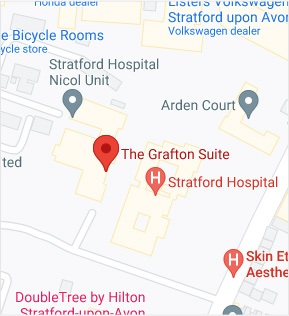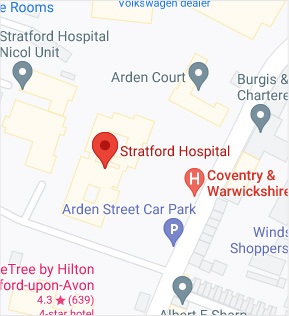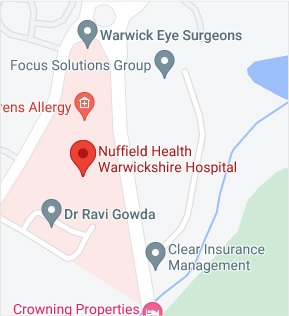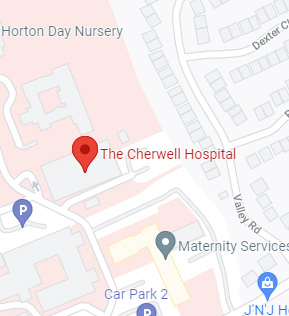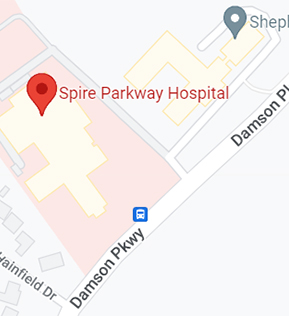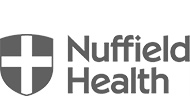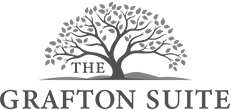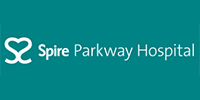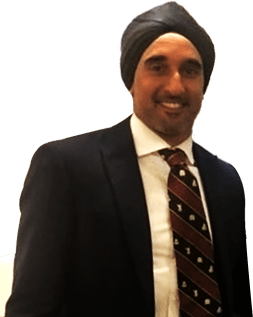
Latarjet Procedure Surgeon in Warwickshire
The Latarjet procedure is an advanced procedure to treat shoulder instability caused by lack of bony support in the shoulder joint. Mr Karan Mangat provides diagnosis and individualised nonoperative and operative treatments including the Latarjet procedure in Warwickshire. Mr Karan Mangat also provides the highest level of care during and after surgery. Contact Mr Karan Mangat’s office for an appointment today!
Shoulder Anatomy
The shoulder joint is a ball and socket joint with the head of the humerus (long arm bone) forming the ball, and the cup-shaped depression on the shoulder blade (glenoid fossa) forming the socket.
Disease Overview
The joint is stabilised by the labrum, a cartilaginous rim of the glenoid cavity, and the capsule, a series of ligaments that enclose the joint. Injury and trauma can tear or stretch the labrum and/or ligaments, causing instability and dislocation of the joint. The shoulder can dislocate in front (anterior), down (inferior) or behind (posterior), but anterior dislocation is the most common.
Tearing of the labrum due to trauma is called a Bankart tear, which sometimes involves the breaking of bone along with the labrum. This is referred to as a bony Bankart tear. Shoulder instability can lead to pain and a feeling of giving way.
What is the Latarjet Procedure?
The shoulder joint provides a wide range of movement to the upper extremity, but overuse or trauma can cause instability to the joint. The Latarjet procedure is a surgical procedure performed to treat shoulder instability by relocating a piece of bone with an attached tendon to the shoulder joint.
Indications of the Latarjet Procedure
The Latarjet procedure is indicated for recurrent anterior shoulder instability that is caused by a bony Bankart lesion. The surgery is considered when a surgical repair of the labrum does not correct the damage of the shoulder joint.
Latarjet Procedure
- The Latarjet procedure is performed under general anaesthesia with you in a semi-reclined or beach-chair position.
- An incision of 5 cm is made from your shoulder blade towards the armpit.
- Retractors are used to separate the muscles of the shoulder and chest and expose the coracoid process (a small hook-like process of the shoulder bone) and its attached tendons.
- The coracoid process is freed of its attachments, and along with the conjoined tendon, is transected from its base.
- Holes are drilled into the transected coracoid process.
- The subscapularis muscle, which passes in front of the shoulder joint, is split in line with its fibres.
- The capsule of the shoulder joint is entered and the glenoid is exposed and prepared to receive the coracoid.
- The transected coracoid with the conjoined tendon is passed through the separated subscapularis muscle and fixed to the glenoid rim with screws through the previously drilled holes. This increases the glenoid surface and stabilises the joint. The conjoined tendon and subscapularis muscle provide additional stability by acting as a sling.
- Upon completion, the instruments are withdrawn, the incision is closed and covered with a sterile bandage.
Post-procedure Care for Latarjet Procedure
- Following the procedure, your arm is placed in a sling to rest the shoulder and promote healing.
- You may remain in the hospital the night of the surgery and discharged the next day.
- Pain is controlled with medication and ice packs. You will be instructed to keep the surgical wound dry and wear your sling while sleeping for a few weeks after the procedure.
- The sling may be removed in 3 to 6 weeks.
- Rehabilitation usually begins early on the first postoperative day with finger movements and passive assisted range of motion exercises.
- A physiotherapy programme is recommended for 3 months after which you can return to your regular activities.
Risks and Complications of Latarjet Procedure
The Latarjet procedure usually provides good results but as with all surgical procedures, complications may occur and include:
- Hematoma (bleeding)
- Fracture or failure of union of the coracoid
- Stiffness due to inadequate rehabilitation
- Recurrence of instability and infection
If you would like additional information on the treatment of shoulder conditions or to learn more about the Latarjet procedure, please contact Mr Karan Mangat, serving the communities of Warwickshire.


 REQUEST AN APPOINTMENT
REQUEST AN APPOINTMENT



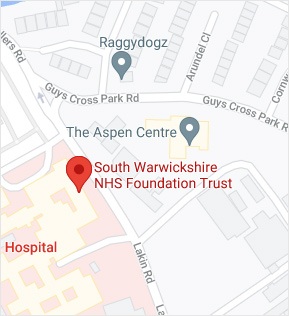
 Ext 4798
Ext 4798